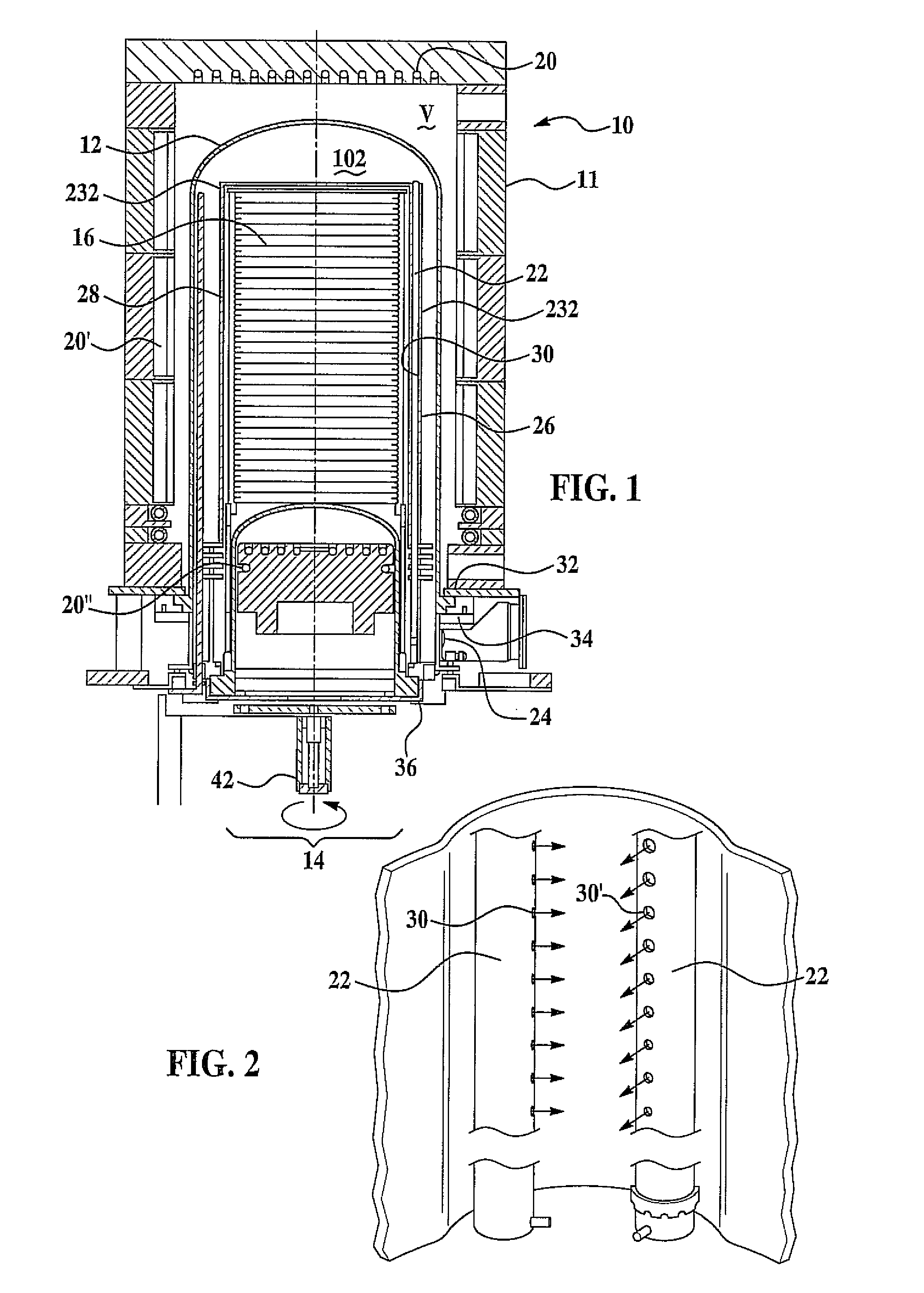Radical Assisted Batch Film Deposition
a batch film and batch film technology, applied in chemical vapor deposition coatings, solid-state diffusion coatings, coatings, etc., can solve the problems of atomic species over large-diameter wafer surfaces and throughout a wafer stack, ozone instability, and limited success in controlling the decomposition of ozone and other radicals, and achieve high degree of wafer-to-wafer uniformity
- Summary
- Abstract
- Description
- Claims
- Application Information
AI Technical Summary
Benefits of technology
Problems solved by technology
Method used
Image
Examples
example 1
SiH4+O2+H2 Oxide Deposition
[0037]A stack of wafers are loaded into a wafer carrier introduced into a reactor as detailed with respect to FIGS. 1 and 2. The process temperature of 700° C. is maintained while the reactor has an internal oxygen concentration of less than 10 parts per million and is continuously purged by nitrogen gas. The reactor is evacuated to a base pressure of 30 milliTorr with multiple pumping stages that provide slower pumping at higher pressures and faster pumping as lower internal pressures are obtained. Upon stabilizing the pressure at 30 milliTorr, the gate valve is closed and a chamber leak check is performed. Nitrogen gas is flowed into the reactor to stabilize the reactor pressure at a process pressure of 1 Torr. Oxygen gas is introduced through a first injector at a rate of 1 slpm. Hydrogen gas flows into the reactor through a second injector at a rate of 1 slpm. Without intending to be limited to a particular theory, singlet oxygen, hydroxyl, and ozone r...
example 2
TSA+NH3+NH3+H2 Deposition of Silicon Nitride
[0038]The process of Example 1 is repeated with the oxygen gas flow being shut off after 30 seconds and replaced with a flow of ammonia at a rate of 1 slpm. After 30 seconds of ammonia flow, TSA is introduced instead of the TEOS of Example 1 to deposit silicon nitride with WTW uniformity of ±3% for 280 nanometer film.
example 3
TSA+Pre-excited NH3+H2
[0039]The process of Example 1 is repeated with ammonia gas passing through a 5000 V electric arc discharge replacing the oxygen gas and TSA replacing the TEOS of Example 1 to deposit silicon nitride.
PUM
| Property | Measurement | Unit |
|---|---|---|
| Temperature | aaaaa | aaaaa |
| Temperature | aaaaa | aaaaa |
| Temperature | aaaaa | aaaaa |
Abstract
Description
Claims
Application Information
 Login to View More
Login to View More - R&D
- Intellectual Property
- Life Sciences
- Materials
- Tech Scout
- Unparalleled Data Quality
- Higher Quality Content
- 60% Fewer Hallucinations
Browse by: Latest US Patents, China's latest patents, Technical Efficacy Thesaurus, Application Domain, Technology Topic, Popular Technical Reports.
© 2025 PatSnap. All rights reserved.Legal|Privacy policy|Modern Slavery Act Transparency Statement|Sitemap|About US| Contact US: help@patsnap.com



